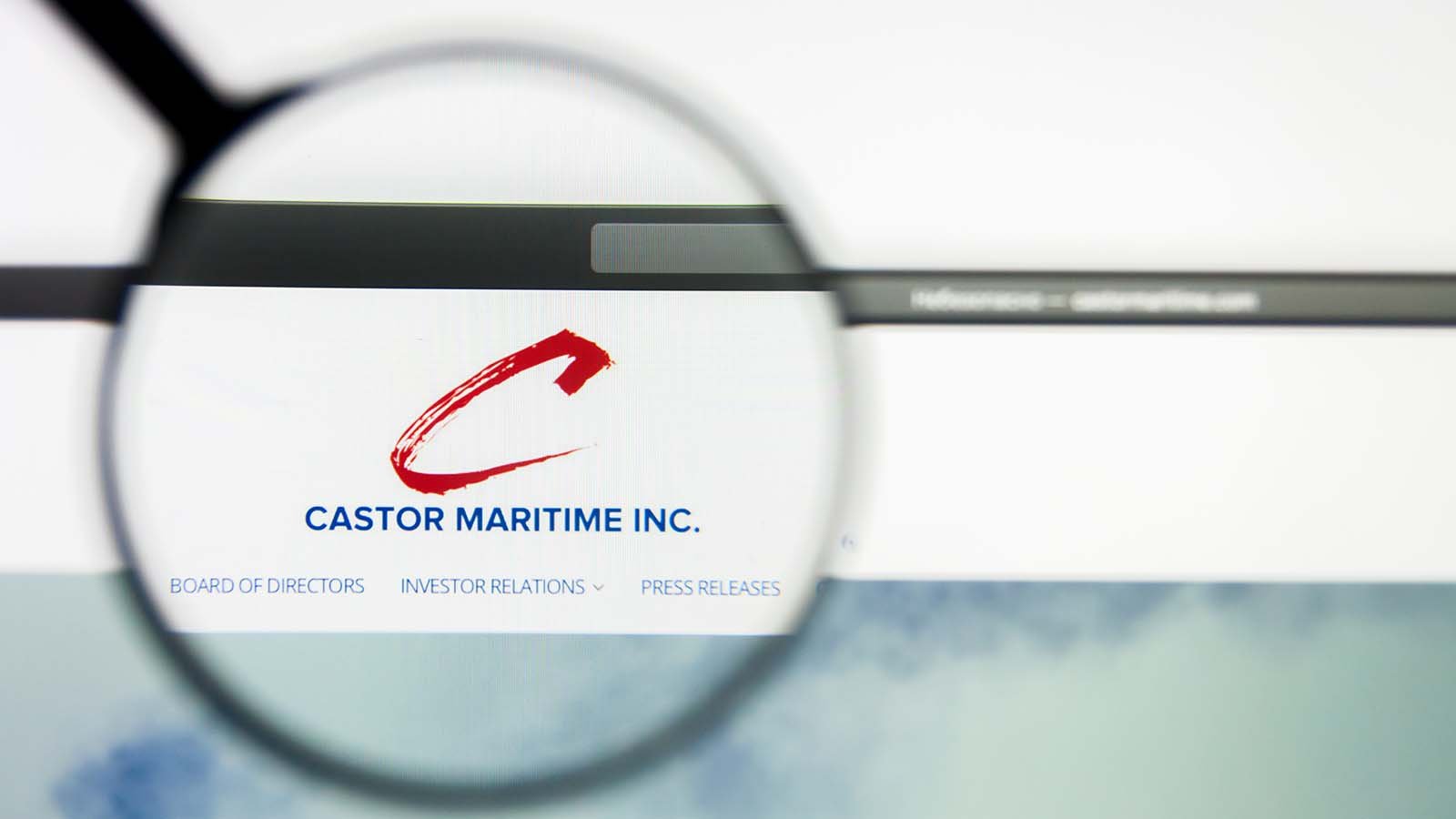Castor Maritime (NASDAQ:CTRM) is a bulk carrier that has recently raised a lot of capital and purchased a significant number of bulk carriers. The value of CTRM stock is difficult to estimate at this time until the company provides more information.
Source: Pavel Kapysh / Shutterstock.com
It’s hard to know exactly how much cash the company currently has, or its exact book value per share (BVPS). There are signs that CTRM stock is now trading too far above its BVPS. Over time, the stock will float down much closer to its BVPS.
Determination of the value of CTRM
The company filed an F-3 registration statement and prospectus with the SEC on Jan. 26 showing it is raising $700 million in equity and debt. It announced on January 25 that it had 509.262 million shares outstanding. But it hasn’t said how much of the $700 million in common stock or debt the company has raised.
An analyst with Alpha wanted said the total is now closer to 710 million shares, following warrants now likely to be exercised. But the problem with his analysis is that he doesn’t know or state what he thinks the company’s current cash position is. The F-3 filing said she had $38.1 million as of September 30, 2020.
But at the time the company had six ships. On March 19 it bought eight, giving it 14 ships on a fully delivered basis. However, we don’t know exactly how much cash the company has left over from those purchases. That’s because we don’t know how much cash the company raised from its $700 million in common stock and debt. And we don’t know the exact number of common shares outstanding now. These are needed to calculate the book value per share.
That Alpha wanted Analyst argues BVPS is now exactly 25 cents per share. But he doesn’t clearly show his calculations, including how much cash he thinks the company has raised and in what form of securities.
Possible BVPS calculations
For discussion, assume that Castor Maritime raised half of the $700 million in common stock at $1 a share. Also, let’s assume that it paid an average of $17 million, or $136 million, for the eight new ships.
That would leave the company with about $252 million in cash and 14 ships worth about $238 million to spare. But now it has 1,060 million shares outstanding (that is, 710 million plus 350 million shares outstanding). Therefore, its BVPS is now $490 million (before debt) divided by 1,060 million shares, or 46.2 cents per share.
On September 30, the company said its total debt was $19 million. Therefore, its book value would be $471 million and its pro forma BVPS was 44.4 cents per share.
But what if the company simply borrowed half of the $136 million (or $68 million) and raised just $200 million in equity at $1.10 per share? That would result in 892 million shares outstanding, $170 million in cash remaining and $238 million in ships — for total assets of $408 million. Now that it has $87 million in debt, its book value would be $321 million, but its BVPS would be 36 cents a share. This is lower than in the earlier scenario, even though the company has raised equity at a higher rate.
What to do with CTRM stocks?
So you can see that without more details we don’t know the exact BVPS. But our scenarios lead us to believe it’s somewhere in the range of 25 cents a share and maybe 45 cents a share.
Keep in mind that I could be way off on a number of factors including value of ships, current debt and current cash. But that’s how you estimate the value of a company. Take what you have and make an estimate.
Given that CTRM stock now trades for just under $1 a share, it’s still at least three to four times higher than its estimated book value. That means the stock is likely to fall given the stellar mail-order earnings. I suspect the drop will be at least 50% from here just to get within range of his BVPS. So watch out below, stay away from this stock for now, at least until there’s better information on its BVPS.
At the time of publication, Mark R. Hake did not hold a long or short position in any of the securities in this article.
Mark Hake writes about personal finances mrhake.medium.com and runs the Total Earnings Value Guide which you can check here.
Regarding penny stocks and low volume stocks: Except for the rarest exceptions InvestorPlace does not post comments on companies that have a market cap of less than $100 million or trade fewer than 100,000 shares per day. Because these “penny stocks” are often a playground for scammers and market manipulators. If we ever post comment on a low-volume stock that may be impacted by our comment, we require itInvestorPlace.comThe authors of ‘s disclose this fact and warn readers of the risks.
Read more: Penny Stocks – How to profit without being scammed

